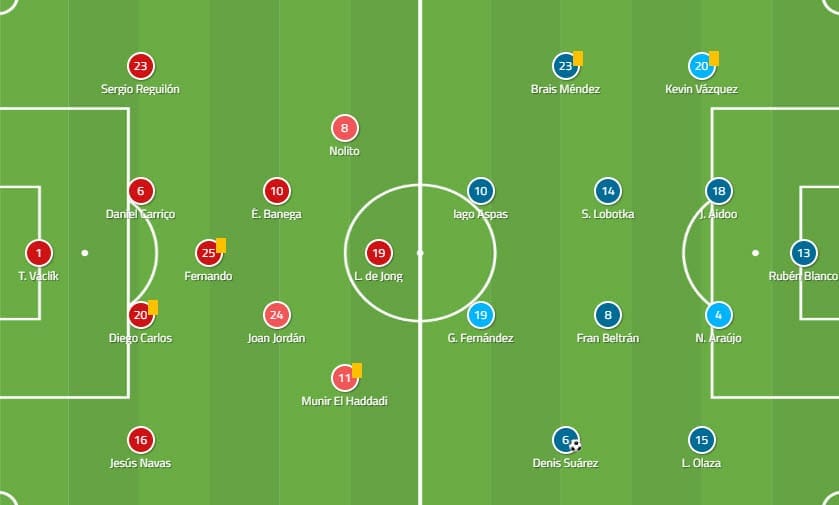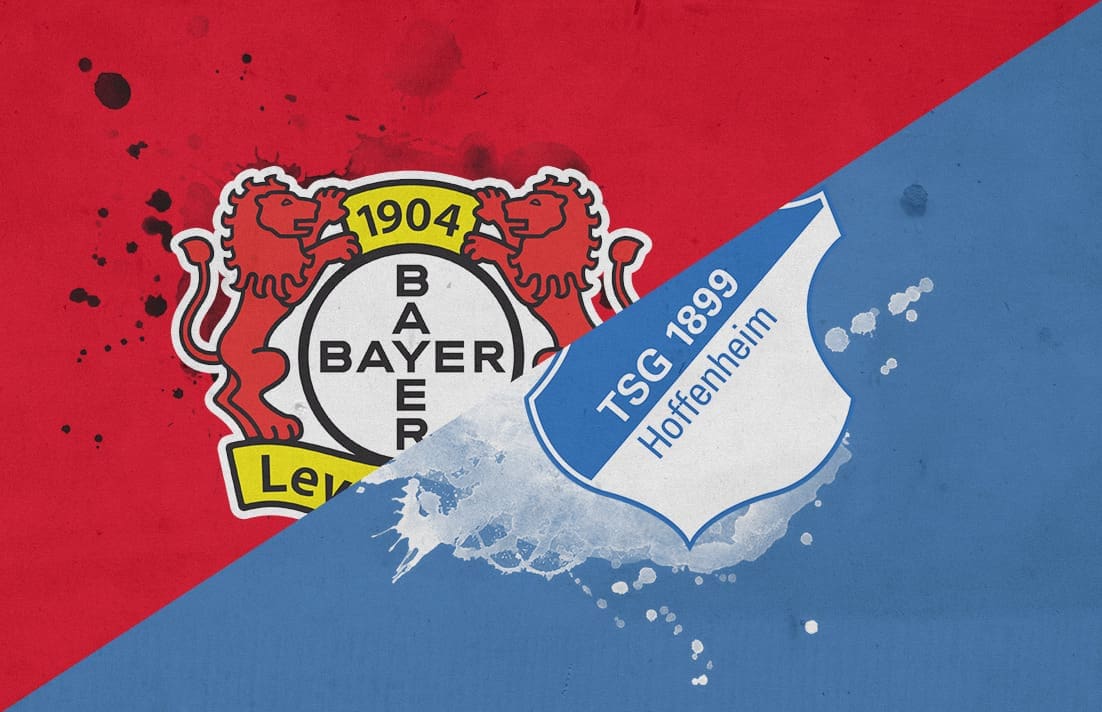Following on from a good start to the new Bundesliga season, Bayer Leverkusen were looking to pick up another win which would have saw them move up to first in the Bundesliga. In their way was a sturdy, compact Hoffenheim side looking to get some consistency in their Bundesliga season. In the end, Hoffenheim’s gameplan prevailed, with them frustrating Leverkusen and limiting them to any kind of real meaningful chances. In this tactical analysis, we will look at Hoffenheim’s shape and a key feature of this, some of Leverkusen’s build-up play and take a look at Kai Havertz’s role within the game.
Lineups
Leverkusen lined up in a 4-3-3 while Hoffenheim lined up in a 4-2-3-1, which at times turned into a 4-5-1. Kai Havertz struggled to make an impact in the game, in part thanks to one of the key tactics employed by Hoffenheim and manager Schreuder, as I will touch upon in this piece.

Hoffenheim’s shape
As mentioned Hoffenheim set up in a 4-2-3-1, which dropped into a 4-5-1 at times. We can see this below and can see how the compactness of the team both vertically and horizontally impacted on Leverkusen’s ability to play from the back. This shape forced Leverkusen into wide areas, where they struggled to create overloads, and due to players not really occupying the space between the midfield and defence of Hoffenheim, they struggled.

We can see this again, but Hoffenheim here display more of a 4-2-3-1 shape, with the three pressing the ball carrier and looking to prevent passes through. Leverkusen invade each other’s space here, and if the player between the two Hoffenheim players moved further forward, he could have created a much better passing angle.

Hoffenheim and Havertz
As for Leverkusen’s most creative player, Hoffenheim paid particular attention to Kai Havertz in an attempt to limit his effect on the game. They did this by assigning Florian Grillitsch to stay tight to him if he came in and around his zonal area. It wasn’t a man-mark, as Grillitsch didn’t follow him into very deep or wide areas, but if Havertz was looking to receive the ball in central half-spaces, Grillitsch would mark him as we can see in the images below.
This first image below shows the extent of the zonal mark of Grillitsch, in that the actual shape of the team momentarily becomes a 4-1-4-1, which isn’t a problem as the only player coming between the lines is Havertz who is being marked. With no players offering any passing angles behind the midfield. Hoffenheim are in a comfortable position.

Again we can see Havertz and Grillitsch in roughly the same position, with Grillitsch not allowing him to receive the ball. Again this zonal approach creates some space behind the midfield, but Leverkusen don’t make any runs into that space from midfield.

Havertz’s solution
In order to escape that zonal marking, Havertz started to adjust his starting position in order to create some space. We can see a good example of this below, where this time one of his midfield colleagues occupies Grillitsch’s zonal marking. Havertz starts his run deep, and runs behind the midfield and looks to receive the ball. The benefit of running into the empty space just as you are receiving the ball is that opposition players cannot track the player or mark them, as they are moving. If Havertz enters the space too early and waits to receive the ball, the pass becomes much more predictable and a player may recognise the space and mark Havertz.

In this example Havertz simply looks to avoid Grillitsch again, positioning himself out wide and not actually looking to receive the ball, but still making an impact. Havertz starts his run from the arrow as shown, initially being positioned centrally and being marked. He then makes a run down the line, which opens up the passing lane for Bailey to play into this useful space, however, in what is becoming a theme in this analysis, there’s no support from the midfield, and the strikers don’t come towards the ball either.

Technical struggles for Leverkusen
As well as tactically, some of Leverkusen’s technical play was not as good as it could have been, and this impacted on their ability to play through Hoffenheim.
Their body positioning let them down on multiple occasions within the game, and where they could have turned into space and created chances, they ended up going backwards. We can see in this first example below, the player doesn’t recognise the position of the defender behind him. The defender is not in a position to win the ball cleanly, but the attacker takes a poor touch with their left foot rather than letting the ball roll across the body. With the defender on the wrong side of the attacker, if the attacker takes a sweeping touch with their right foot to keep the ball going forwards, or lets the ball run, the defender will not be able to win the ball without making contact, which gives the player the opportunity to win a foul.

We can see another example of this below, where again, the attacker doesn’t let the ball run across their body and instead opts for a touch back out away from the space, which gives the opposition a chance to make a recovery run and close off that space. If the attacker just has a scan around, they will see there’s no one close behind him, and so if the weight of pass is correct, they can let the ball roll across their body, or again take a touch taking them into that space.

Hoffenheim look to counter
Hoffenheim’s gameplan was based around remaining compact and being clinical with the chances they created on the counter. Leverkusen dealt with the counter-attacking threat well, counter-pressing well and limiting Hoffenheim to only 0.34 Xg, which came from two chances which were created with a bit of fortune.
We can see an example of this good counter-pressing here from Leverkusen, when they lose the ball and are immediately able to box in the attacking player on the ball and block the passing lanes forwards. This leads to a block by Leverkusen, but the ball bounces into an uncovered area, and Hoffenheim are able to escape the counter-press, if the block had gone somewhere else Leverkusen maybe would have won the ball and countered, but the compactness of the player highlighted could maybe be questioned.

Again, this counter-press is nice and compact, and Leverkusen get players around the ball to stop Hoffenheim playing short, which forces a long ball. Again this would have been better had they won the ball high up, but this isn’t always possible.

Conclusion
Hoffenheim dealt well with the threats Leverkusen posed on the day, but Leverkusen put in a disappointing performance offensively, and on one of their better days offensively, and we know they can be better, they may have found a way to get a result. Leverkusen now face a completely different game next week away at Dortmund, where they will have to utilise these spaces much better than they did in this game.

If you love tactical analysis, then you’ll love the digital magazines from totalfootballanalysis.com – a guaranteed 100+ pages of pure tactical analysis covering topics from the Premier League, Serie A, La Liga, Bundesliga and many, many more. Buy your copy of the August issue for just ₤4.99 here.




Comments